Building a Playbook
Let's look into how you would build a Playbook. Playbooks are a set of criteria that describe the types of Accounts or Users that you're interested in knowing about, and automatically triggers actions to take accordingly. Once you create one, Correlated tracks when accounts or users match the criteria you've defined and keeps a history.
Creating a Playbook
-
To create a Playbook, simply navigate here and click the "New Playbook" button in the top right.
-
Choose whether you want this Playbook to target Accounts or Users.
Accounts will aggregate metrics from all the Users mapped to those Accounts. The option you choose here will determine what metrics and dimensions you can use to create the conditions, and what downstream actions are available later on.
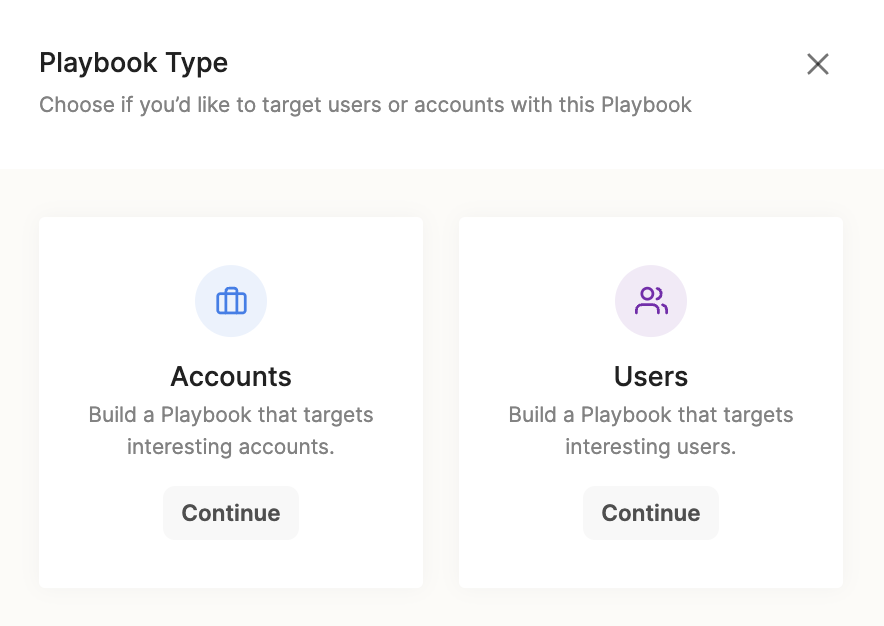
- Give the Playbook a title that is clear and concise, and add a category to further organize your Playbooks.

Popular categorizations include stages of the customer lifecycle related to your Signal like Expansion, Conversion, and Churn, or various tiers of customers like Self-Serve, Mid-Market, and Enterprise.
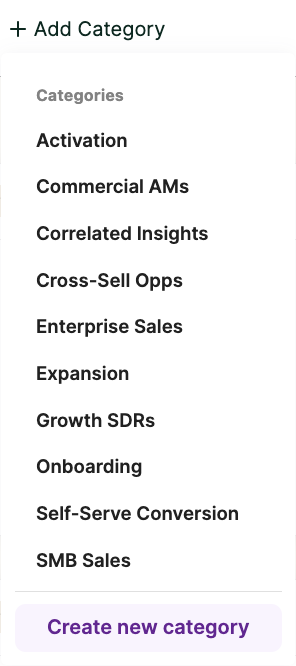
Criteria to Define Playbooks: Dimensions, Metrics and Other Playbooks
Dimensions describe who the customers are - for example, how many seats they have, what region they are based in, how many employees they have, etc.
Metrics describe what your customers are doing in your product - for example, sign-ins, page views, feature usage, etc.
Playbooks as a condition looks at Accounts/Users who are already active members of another selected Playbook. This is great to achieve more complex Playbook functionality, that act like "sequences" for your PLG customer lifecycle.
- To define the criteria you care about and determine who can enter this Playbook, click the "Add a Condition" button. Here, you can flexibly combine Dimensions and Metrics (from multiple data sources) that you'll use to identify PQLs and PQAs.

Tip: You can easily search for Dimensions, Metrics, or Playbook conditions by name, or use our filters to find them faster.
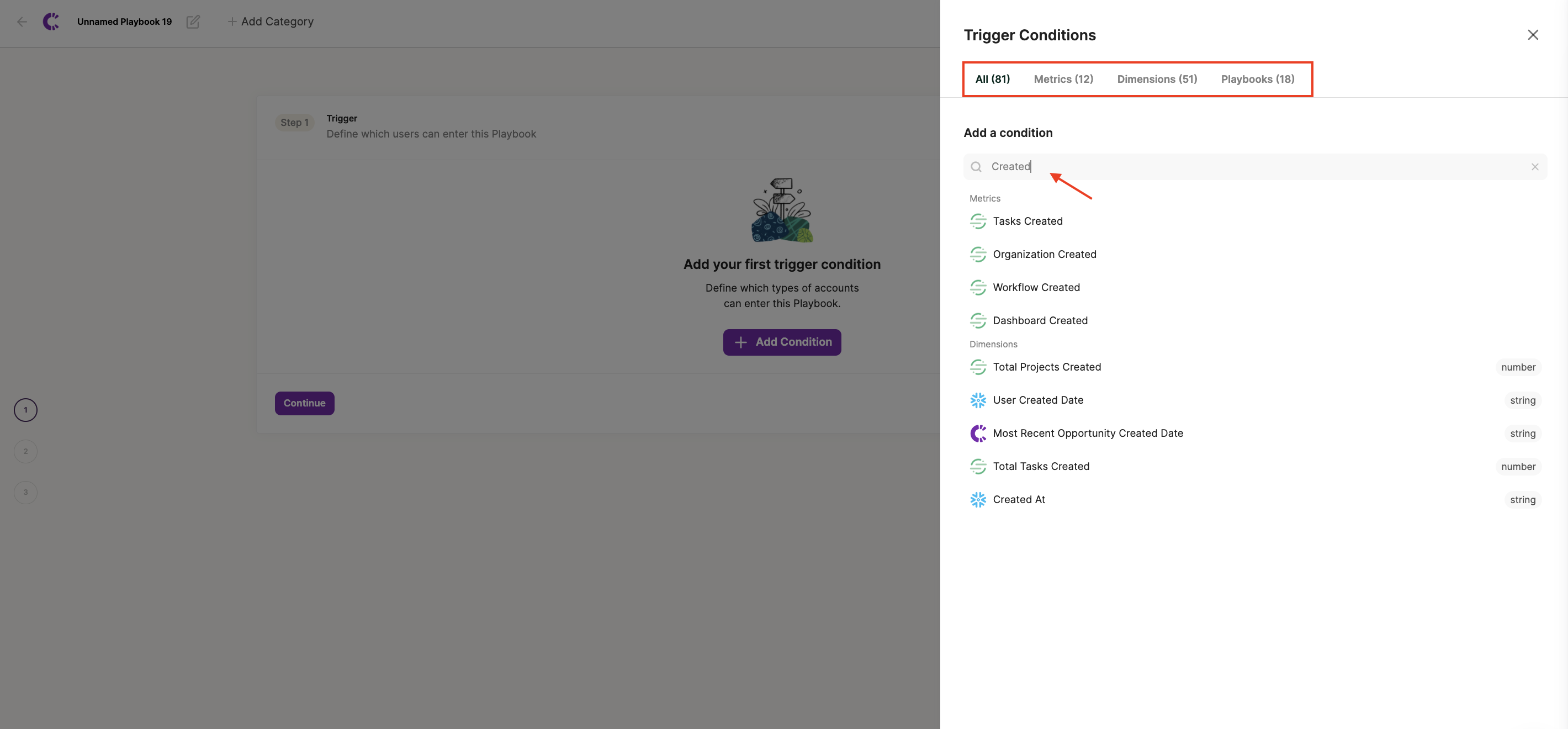
Below is an example of conditions that look at accounts with a "very good" activity score or higher, and more than 4 licenses sold. Note: You can also determine if customers need to meet ALL of the conditions defined, or if they can meet ANY to enter the Playbook (see "Trigger if __ of the following conditions become true...")
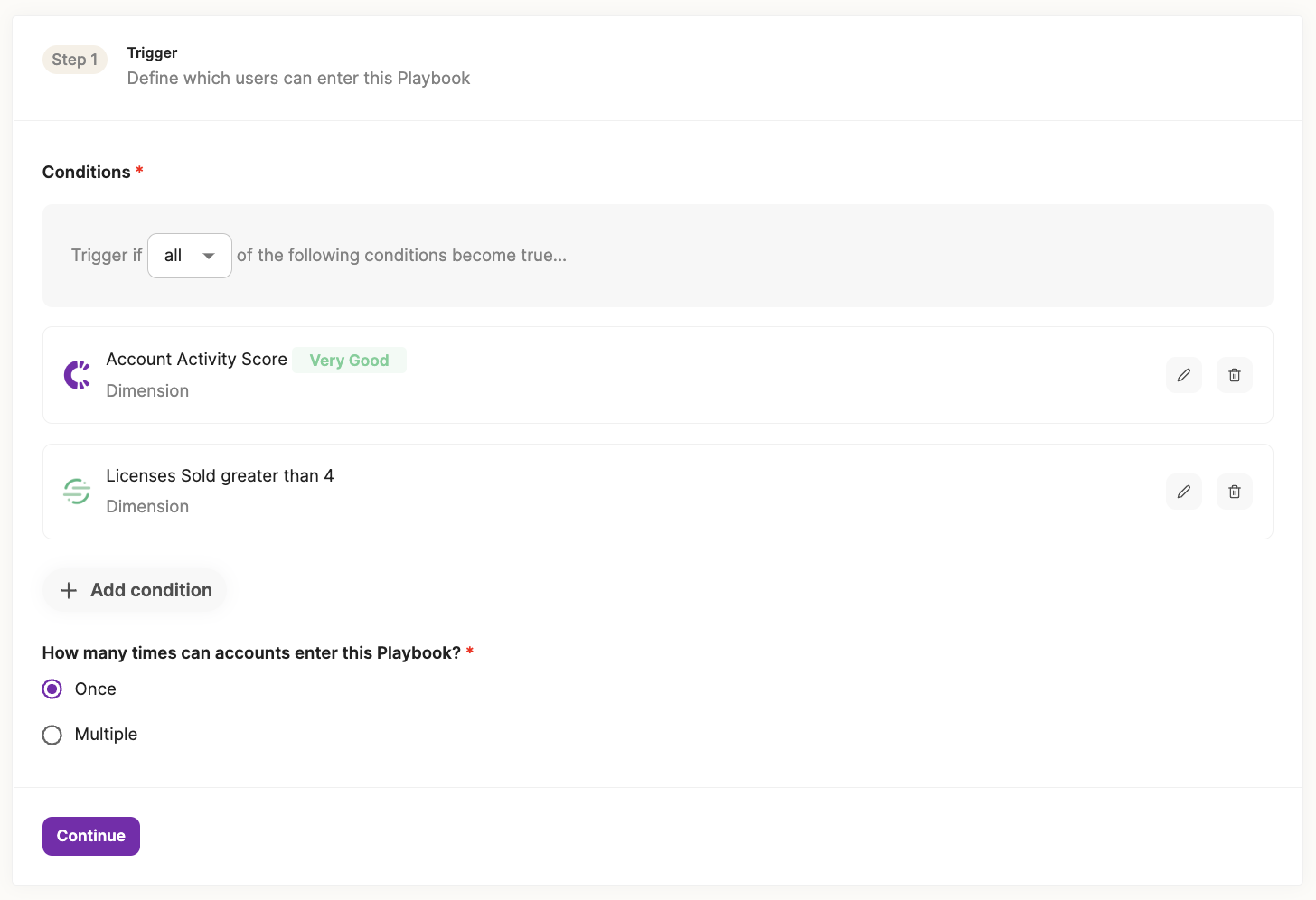
Accounts or Users Can Trigger More Than Once
Since Playbooks are built on usage, Accounts and Users can match the criteria more than once.
For example, if you create a Playbook that looks for accounts where total usage increased 10% or more week-over-week, an account might enter at the beginning of the month, exit that Playbook in the second week, and re-enter in the last week of the month. You would ultimately see this signal twice as a result for that account.
If you do NOT want accounts or users to be able to re-enter a Playbook, change the "How many times can accounts / users enter this Playbook?" setting to "Once" ⬇️

Refining Your Playbook
One thing you might have noticed is that you have to select a threshold that defines what it means for a usage metric to be interesting.
The best way to figure out this threshold is to use our live "Results" section on the right-hand side of the Playbook builder. As you add various conditions, Correlated will pull in the actual number of customers already meeting the criteria, and a preview list of who those customers are.
If something doesn't look right, just adjust your condition thresholds!
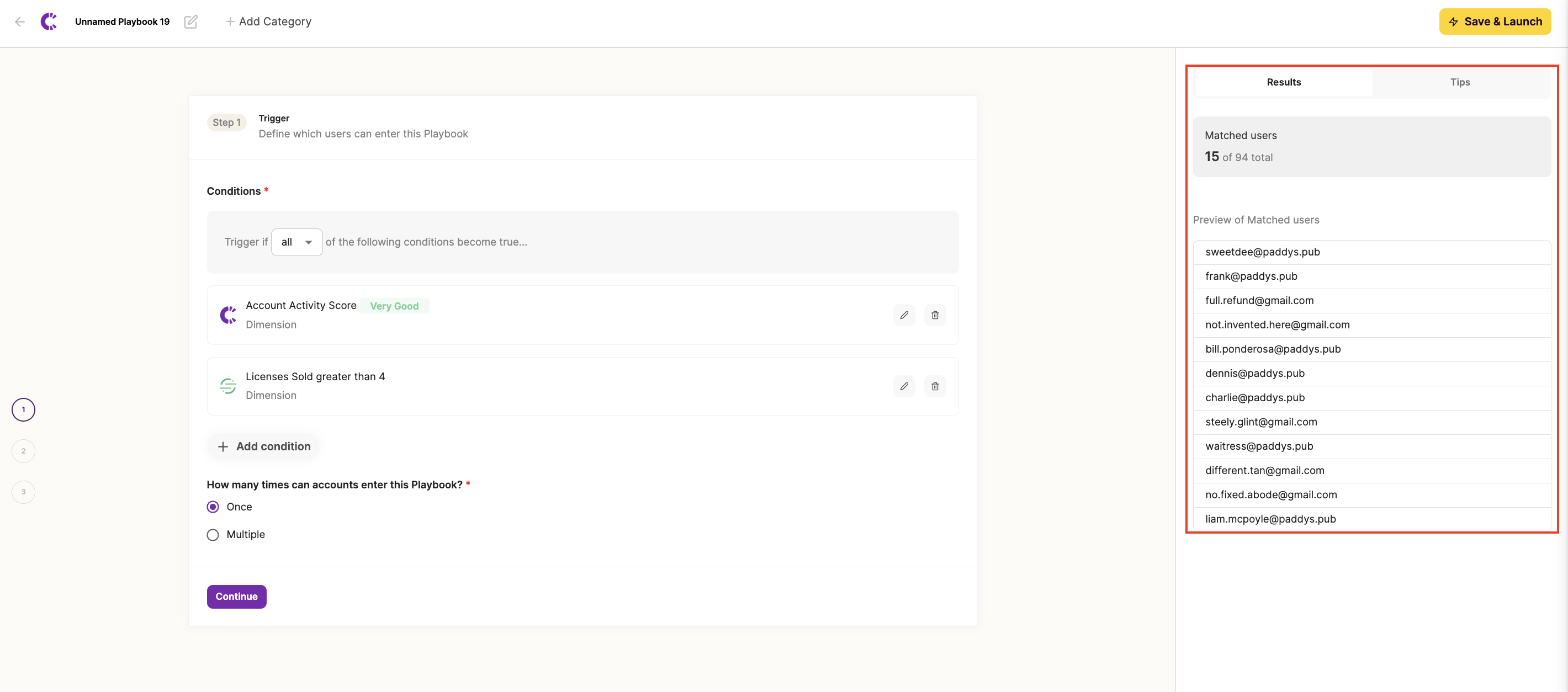
Configuring Ownership Assignments
- Once you define the Playbook conditions, you have the option to use Correlated's Ownership Assignment. You should consider using this feature if you would like to round-robin assign accounts or users equally between reps of a certain team, based on Playbook logic.
- Before you can get started, see step 1 here to set up your Owner Groups.
- Back in the Playbook settings, choose the group you would like to assign ownership between.
- Moving forward, when a new user or account triggers the Playbook, Correlated will automatically assign someone from the designated group to own the entity.
- Note: If there is only one email address in the group, the Playbook entries will be assigned to that single owner every time.
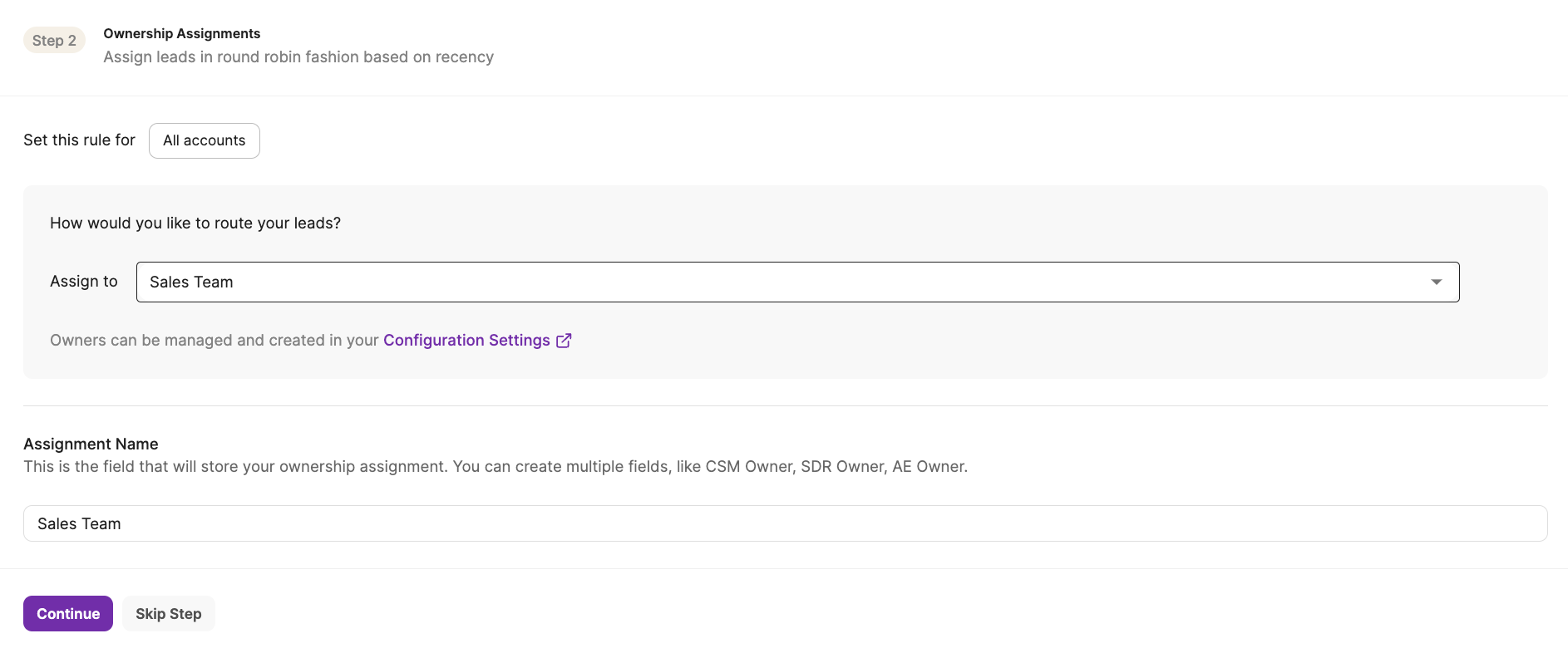
This ONLY works in tandem with the following Playbook actions
One of the following actions MUST be present in the Playbook in order for the ownership assignment to work, and we will maintain that assignment in the downstream application when the action is executed:
- "Add to Salesloft Cadence"
- "Add to Outreach Sequence"
- "Create a Salesforce Task"
- "Webhook: Send to URL"
- "Slack: Send a DM"
If set up properly, you'll see the following message in your action:
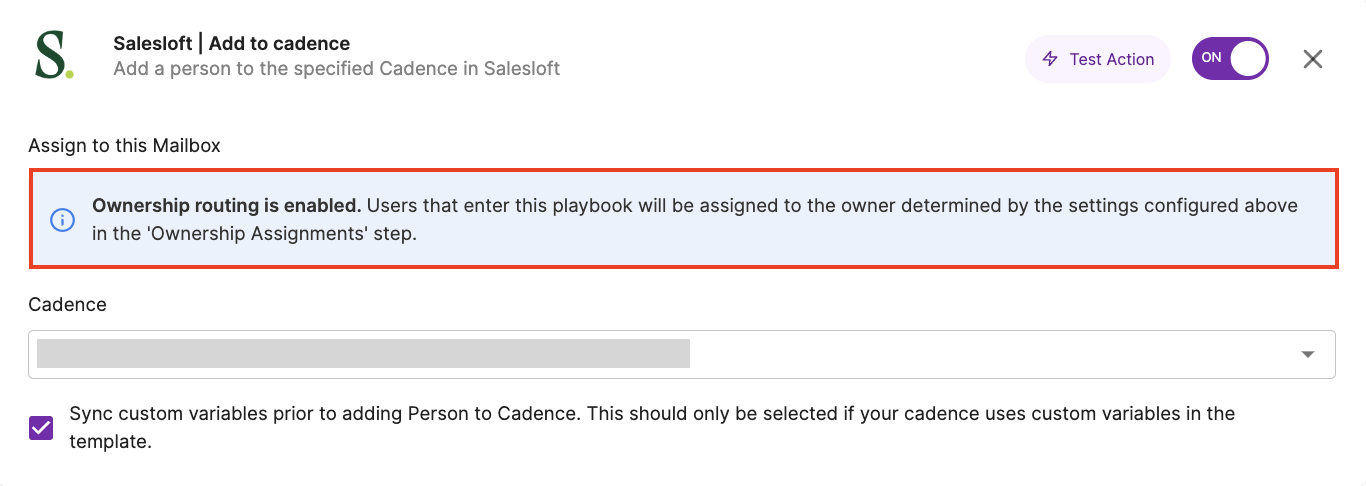
- Please also note:
- If you'd like to set up custom rules around ownership beyond the existing Playbook conditions, you can do so where it says "Set this rule for All accounts" Just click into "All accounts" and you can add additional rules, for example "Region = APAC" if you need to assign by region.
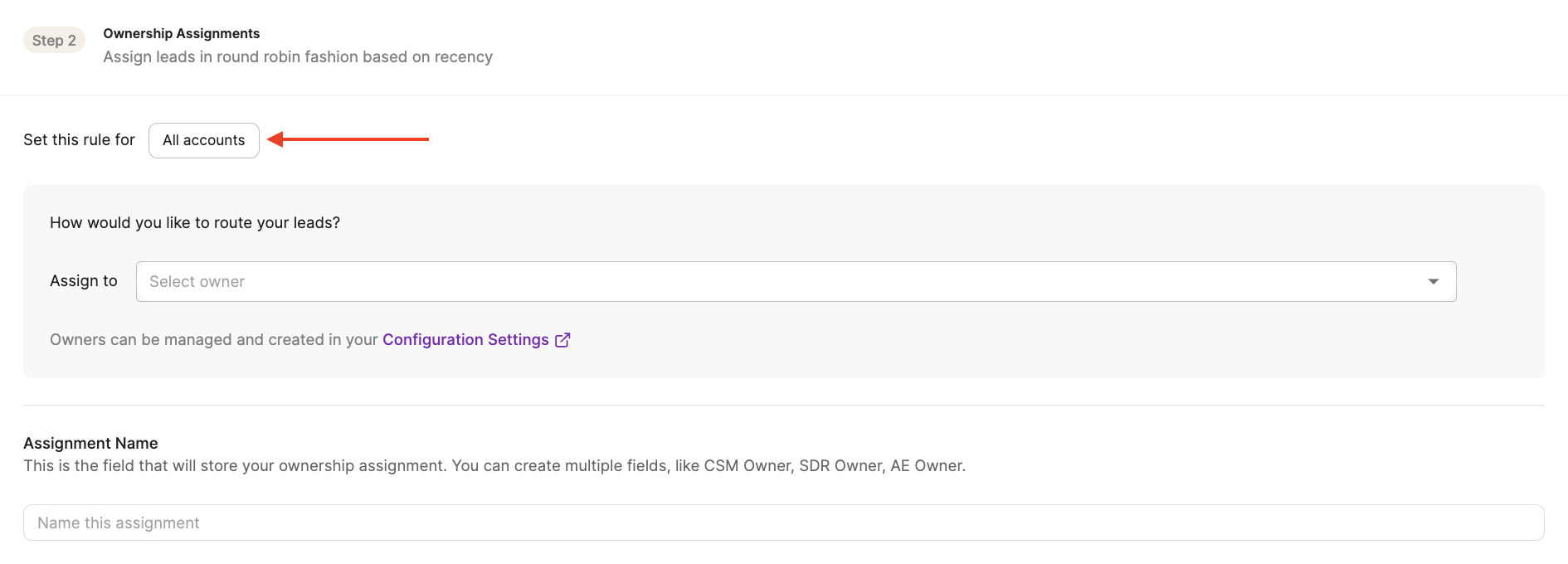
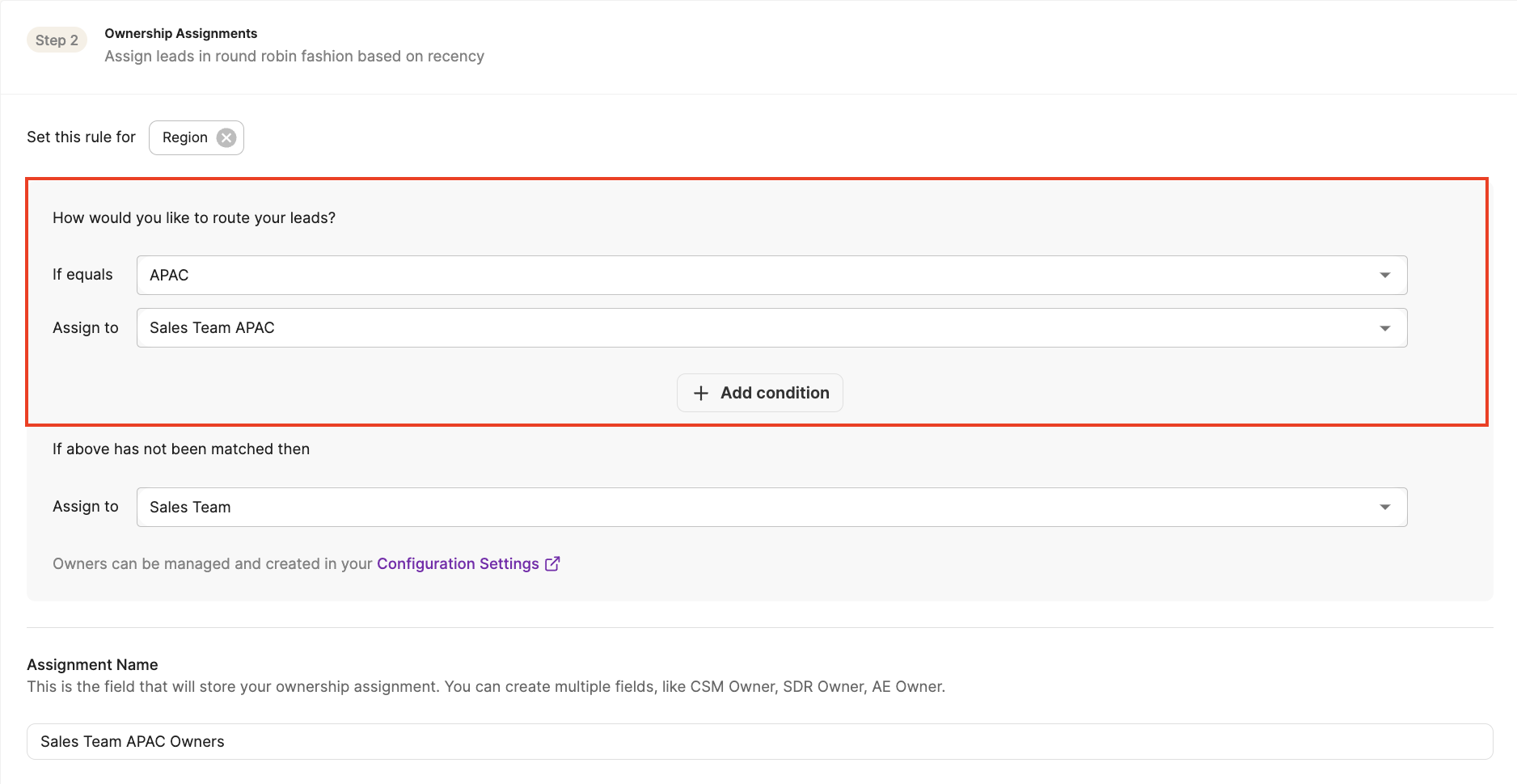
- Under "Assignment Name" you can give this specific assignment a name, which will appear as a dimension elsewhere in the product, like when you are filtering user or account lists. For example, the dimension would show as "Sales Team APAC Owners"
Adding a Downstream Action
To get the most out of Correlated and fully streamline your PLG or PQL workflows, it's important to add an action for your team to follow up on. In the "Add Actions" section, just click on your favorite downstream app and set up automatic notifications / triggers to power your Playbook.
To learn more about each integration, click the docs below:
- Slack Notifications
- Outreach Sequences
- Salesloft Cadences
- Salesforce Tasks
- Salesforce Objects
- Hubspost Lists
- Marketo Leads
- Webhooks (with Zapier)

Tracking Playbooks with Goals
Finally, once your signal settings within the Playbook look good, you can add a "Goal" to closely track business outcomes. Just use the same Dimensions and Metrics to define the Goal, and set a number of days customers who enter this Playbook should achieve the Goal by.
Once you hit "Save & Launch" we'll start tracking this Playbook's Goal on an ongoing basis. You can view the history / details on each Playbook's homepage.

Other Tips
Explore our built-in condition filters at the Metric level, such as Total Count (Percent Change), Percentile, and Percentile Change over time to help catch power accounts and users.
For example, look at accounts whose "signed in" events are in the top 10% compared to all other accounts.
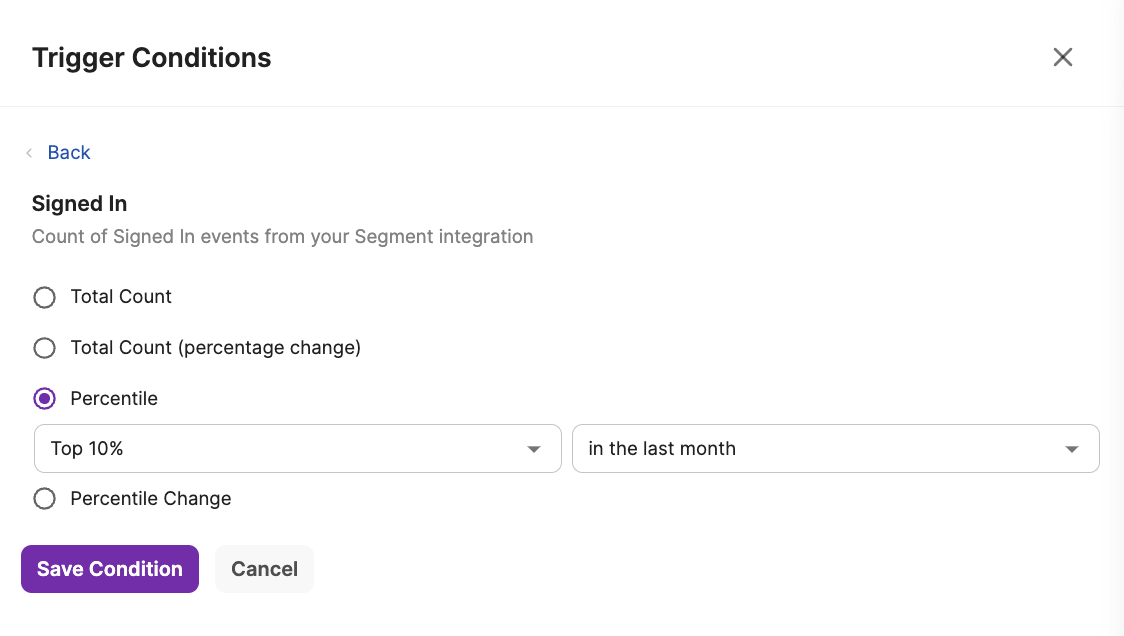
Updated over 2 years ago
